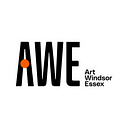Links as Bones: Sorel Etrog and the Fragile Body: A Review
Written by James Pineault, Chair of the Collections Committee at the Art Gallery of Windsor
Today, I am really excited to discuss a beautifully curated exhibit that is currently showing at the AGW entitled Links as Bones: Sorel Etrog and the Fragile Body, curated by Alma Mikulinsky.
About Sorel Etrog
Sorel Etrog was an artist of Romanian Jewish descent who escaped the anti-Semitic environment of post WWII Soviet Romania to study in Israel. Eventually, Etrog moved to New York, and then to Canada, where he found gallery representation and great international success. To put Links as Bones into perspective, Etrog had been in a serious car accident in 1967 and was in terrible pain, so he could not work on his large-scale sculptures in a way that he was accustomed to — and acclaimed for. Nevertheless, Etrog transitioned from three-dimensional sculpture on a monumental scale to more moderate and smaller two-dimensional works. I think we can all relate to having been sick or injured at some point and looking out the window while others were going about their days; a very frustrating feeling. I wonder if Etrog felt a similar frustration after his car accident, and created art to manage that feeling. I think this exhibit demonstrates that some of the greatest works that exist today were created by artists who were experiencing injury and/or disability; Frida Kahlo did much of her work bedridden, and Gershon Iskowitz drew and painted at night while being held prisoner in Auschwitz during WWII to try to keep his sanity.
About the Exhibition
Alma Mikulinsky has, very deftly, curated a brilliant show that looks at many of Etrog’s two-dimensional works from a previously unexplored perspective: one that focuses on Etrog’s experience of disability, recovery, and renewal. Moving along the east wall, you are confronted with several large-scale standout works, which are absolutely breathtaking, and very loosely reminiscent of Picasso’s Les Demoiselles d’Avignon or Guernica. That said, the pieces are strongly reflective of Etrog’s incredibly personal artistic vision and prowess — something you likely have never seen before if you have not yet seen any of Etrog’s work. As you move along these large, multi-paneled masterworks, you can always sit down and relax for a minute or two to contemplate them on the large comfortable bench in the exhibition space. If you are seated on this bench, you will notice that out of the corner of your eye to the right, there hangs a small grouping of pieces (twelve oil on canvas board paintings all Untitled, 1969) that explore colour in a very lyrical way and contrast with the larger panels. Cast your eyes further to the right, and you will find a large panel of Etrog’s prose, which provides you with Etrog’s inner musings on life’s many apparitions of links. This panel is then followed by a series of smaller works — etchings, prints, and drawings — that further explore these concepts in a very clever way. These works really demonstrate Etrog’s mastery of design and spatial awareness — even in a two-dimensional format — and especially showcase Etrog’s rich sense of colour, tone, and shading.
Altogether, this moderately sized exhibit is quite the ride, and I would highly recommend it for both children and adults alike. Etrog’s unique artistic vision, and this new perspective on Etrog’s work, is certain to open minds and hearts of all who come to visit Links as Bones!
About the Author:
I have been a longstanding member of the AGW and was recently elected to the Board of Directors, and appointed to chair the Collections Committee at the AGW. I have to say that I am very proud to be associated with one of the best art galleries in Canada and look forward to contributing to the realization of the new strategic plan headed by our very talented and professional staff. This is a journey that I have embarked upon with the hopes of giving back to both the Windsor-Essex community, and to the AGW, which has provided my family and I with top-notch programming over the years.
